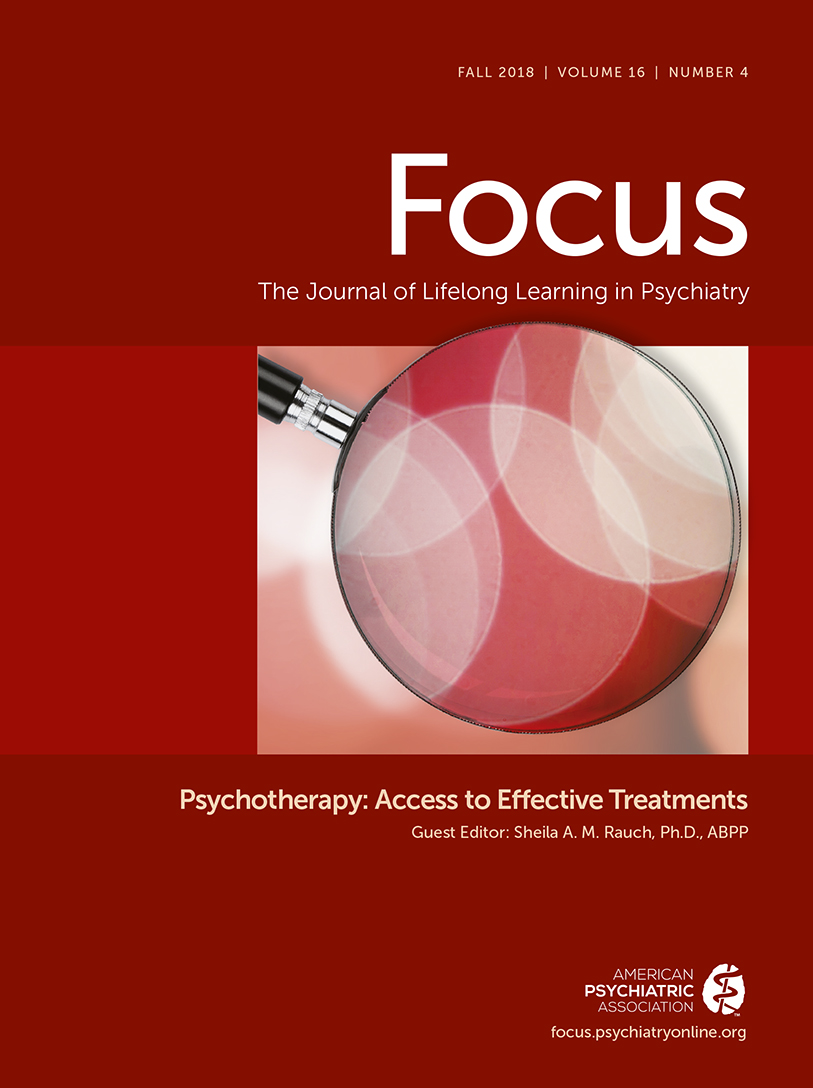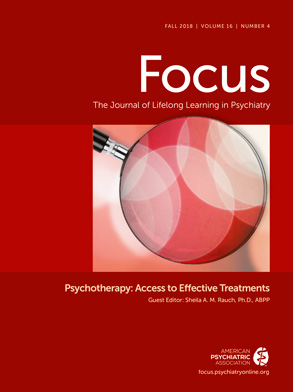When selecting psychotherapies for posttraumatic stress disorder (PTSD), most clinicians first think of cognitive-behavioral therapy and trauma-focused therapies such as prolonged exposure therapy, cognitive processing therapy, and trauma-focused cognitive-behavior therapy, despite skimpy evidence of their superiority to other psychotherapies (
1). Moreover, at least initially, focusing on trauma can destabilize many patients with PTSD.
Alternatives exist. Several non–trauma-focused psychotherapies for PTSD have demonstrated clinical effectiveness, including noninferiority or equivalence with trauma-focused approaches in some head-to-head trials. Three notable examples bear mention: interpersonal psychotherapy (IPT), present-centered therapy, and mantram therapy.
A large, randomized controlled trial of IPT modified for PTSD compared with prolonged exposure therapy produced roughly equivalent results for patients with chronic PTSD and high rates of comorbid major depression and personality disorder (
2). Overall, IPT yielded higher patient preference and fewer dropouts, and it achieved greater response rates among patients with comorbid depression.
Initially developed as a “nonspecific” control treatment for psychotherapies, present-centered therapy focuses on psychoeducation concerning the impact of trauma on current life, altering maladaptive patterns, and using problem-solving strategies. Meta-analyses of controlled comparison trials have shown large effect sizes for present-centered therapy, equivalent efficaciousness for targeted and secondary measures, and significantly lower dropout rates.
Mantram therapy focuses on slowing thoughts via one-pointed attention. A recent controlled trial compared eight weeks of mantram therapy with present-centered therapy for veterans with PTSD. Both groups improved; two months after treatment, 59% of mantram and 40% of present-centered therapy patients no longer met the criteria for PTSD.
Patients with PTSD differ significantly from one another with respect to trauma, temperamental vulnerabilities, developmental stage when traumatized, psychiatric and medical comorbid conditions, and assorted social factors that affect course and treatment responses. Similarly, psychosocial and biological therapies vary greatly. In determining suitable treatment packages, clinicians need to consider all individual characteristics, including ability to confront traumas at point of contact. Non–trauma-focused psychotherapies might prove to be the preferred treatment choice initially and possibly in the long run. At the least, effective elements of these approaches can be incorporated in most treatments.

